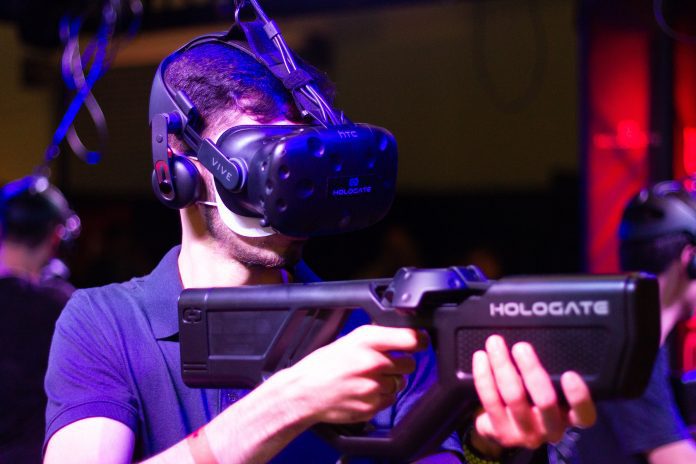With virtual reality (VR), you may experience a medical procedure, rehearse a sales pitch, tour the universe in a spacecraft, inspect a potential property before buying it, and create 3D art, all from the convenience of your own home. Virtual Reality Device has created many conveniences for mankind and it has a wide range of uses.
Utilizing a headset and motion sensors, a Virtual reality device simulates various worlds and it can employ in a variety of settings, from education to well-being.
In 2010, Palmer Luckey developed the prototype of the VR headset that would become the Oculus Rift, which is when modern VR first gained popularity. He started a crowdfunding campaign on Kickstarter in 2012 and garnered $2.4 million, generating interest in VR.
Virtual Reality: What is it?
A three-dimensional, computer-generated environment that can be examined and interacted with by a human is referred to as virtual reality. This individual enters this virtual world or is fully submerged in it, and while doing so, they can control items or carry out a sequence of acts that affect the surroundings.
Typically, Virtual Reality Exhibits The Following Four Traits:
- Credible: What you see and hear gives you the impression that you are in your virtual environment.
- Immersive: Just like in real life, as you turn your head, what you see also changes.
- Computer-generated: Complex 3D computer graphics are typically used to build VR worlds that alter as we travel through them.
- Interactive: You can click buttons or open doors to interact with various objects in the area.
VR Headset
The headset, which fits over your eyes like a pair of goggles, is the most crucial piece of a Virtual reality device. It completely submerges you in the virtual world.
Mobile VR Headsets
You insert your smartphone into a mobile headset, which is a shell with optics. Your smartphone is transformed into a VR device by the lenses, which divide the screen into two pictures for your eyes.
Mobile headsets cost less than $100, and since the processing is handled entirely by your phone, there is no need to attach any cords to the headset. However, since phones aren’t built for VR, they can’t provide the best visual experiences and are weak when compared to VR which runs on a PC or gaming console.
Furthermore, smartphone VR does not yet provide positional tracking. You can view an environment from a single point, but objects are not in view from that point.
Standalone Headsets
Without using a phone, PC, or cable, enjoy high-quality VR wherever you want. A standalone VR headset, sometimes known as an all-in-one VR headset, has everything you need to feel as though you are in another place. Like a phone or tablet, it is a single integrated piece of hardware.
Mobile devices are standalone. However, it is important to realize that not all wireless VR headsets function independently. While some systems use wired packs that clip to clothing or tuck into pockets, others wirelessly beam information from neighboring PCs or consoles.
Pc Connected Headsets
At a premium price range, these headsets offer a more immersive experience. The majority of these headsets can connect through wires to an external piece of hardware that supplies power to the headset.
Image and sound quality are greatly enhanced, as well as head tracking, by using a specialized display, internal motion sensors, and an external camera tracker.
In addition to the cumbersome wires, the cost is the trade-off. With the Rift and the Vive, you’ll need a strong PC to run them, whilst the PS VR requires a PlayStation 4 at the very least. The least cost tethered choices are presently around $400.
VR Applications
VR has a wide range of uses, including in engineering, entertainment, and even hiring. Virtual reality device is now most often common for gaming, although there are many other beneficial uses as well:
- Automobile sector
- Healthcare
- Gaming
- Retail
- Architecture
- Sports
- Education
- Art
- Well-being
- Charity
Augmented Reality Versus Virtual Reality
Utilizing a smartphone camera or a headset lens, augmented reality (AR) overlays digital elements over your live view of the real world. The Pokémon Go app, Magic Leap, and Snapchat lenses are a few examples of augmented reality experiences.
VR entirely blocks out your surroundings so you can fully immerse yourself in the virtual world. Users can enter a variety of real-world and imagined landscapes using VR devices like the HTC Vive, Oculus Quest, or Pico VR.






















